Conflict Zones
Manhunt under way in Kashmir after deadly attack on tourists | Conflict News
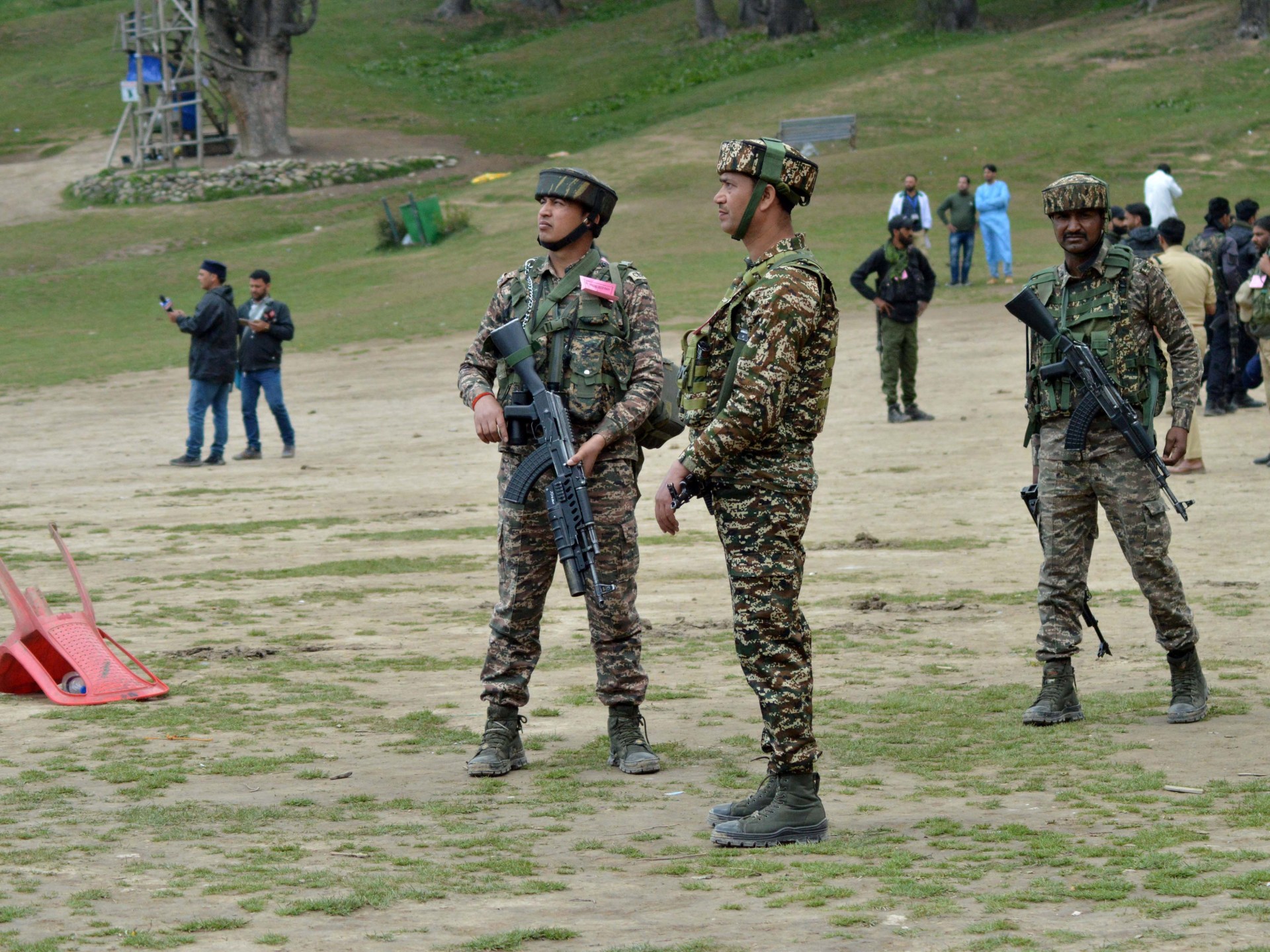
Security forces have launched a manhunt after gunmen opened fire on tourists and killed 26 people in Indian-administered Kashmir’s worst attack on civilians in almost a quarter of a century.
All those killed in Tuesday’s attack were listed as residents of India, except for one man from Nepal.
A statement issued in the name of The Resistance Front (TRF), which is believed to be an offshoot of Pakistan-based Lashkar-e-Taiba, claimed responsibility for the attack.
The statement linked the attacks to the thousands of residency permits being handed over to Indian citizens, allowing them to settle in Kashmir. Al Jazeera could not independently confirm the statement’s authenticity.
Jammu and Kashmir Chief Minister Omar Abdullah said the attack had been “much larger than anything we’ve seen directed at civilians” in recent years.
The bodies of those killed were brought to Srinagar by a fleet of ambulances on Wednesday as military helicopters soared overhead, searching the forested mountain flanks for signs of the attackers.
“This attack on our visitors is an abomination,” Abdullah said in a statement.
The killings led to global condemnation.
United States President Donald Trump called Indian Prime Minister Narendra Modi to offer “full support to India to bring to justice the perpetrators of this heinous attack”.
China, which neighbours the troubled region, offered its “sincere sympathies” to the families of those killed.
Authorities in recent years have promoted the mountainous region as a holiday destination for skiing during winter and to escape the sweltering summer heat elsewhere in India.
About 3.5 million tourists visited Kashmir last year, mostly domestic visitors.
Conflict Zones
White and Black farmers still bear the scars of Zimbabwe’s land grabs | Poverty and Development News
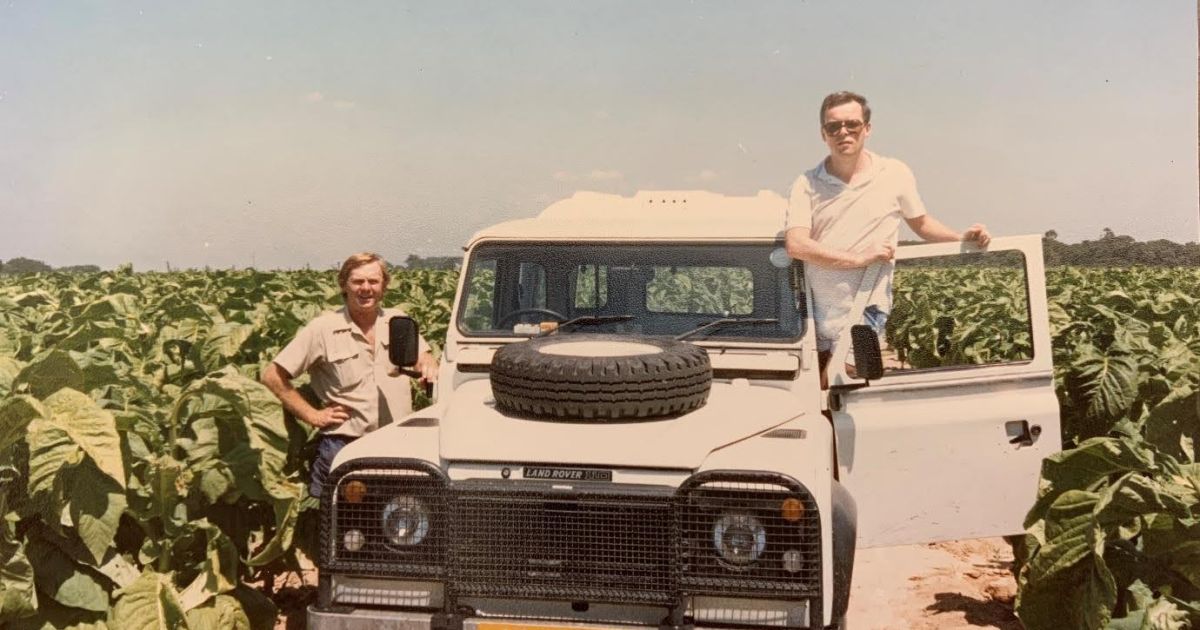
Harare, Zimbabwe – Guy Watson-Smith felt hurt and betrayed when his 5,000-hectare (12,355-acre) farm in Beatrice, in Zimbabwe’s Mashonaland East province, was violently invaded by three armed men in the early 2000s.
The then-51-year-old white commercial farmer was not just losing his land; he was leaving behind hundreds of workers and their families, many of whom he had known since childhood.
“We cried,” the 75-year-old told Al Jazeera.
On the morning of September 18, 2001, Watson-Smith, his two farm managers, and his unwelcome visitors sat at a table on the patio.
Watson-Smith’s wife, Vicky, offered them a cup of tea.
But the message was simple: leave or die.
His family was given two hours to pack.
They fled to the capital, Harare, 54km (33.5 miles) away, seeking refuge at his father-in-law’s home in the Avenues, an inner-city suburb.
Watson-Smith’s ordeal was not an isolated incident.
Across the country, war veterans armed with pistols led similar land grabs, together with their children and with assistance from the police’s elite units.
The invasions were part of the chaotic Fast Track Land Reform Program (FTLRP), launched under President Robert Mugabe in 2000 to reclaim land from about 4,000 white farmers and redistribute it to landless Black Zimbabweans.
But instead of redressing past injustices, Zimbabweans say it fuelled economic and land insecurity as mainly governing party loyalists benefitted from the reclamations.
More than two decades on, a struggling agricultural sector haunts Zimbabwe, leaving the question of land ownership unresolved, even as the government has begun to pay compensation to white farmers.

Colonial land invasions
When land was seized from white farmers in the early 2000s, it was forcibly and sometimes violently taken, with at least seven people killed in the process.
However, Zimbabwe’s land struggles did not begin with Mugabe’s FTLRP or even the country’s independence in 1980. The tensions stretch back over a century to the arrival of white British settlers in 1890.
When the British arrived, they invaded Mashonaland areas and took mining rights from the locals under agreements that the local leadership did not understand.
They then expanded control, violently displacing Black people from their fertile ancestral lands.
Forced into barren areas with poor soil, low rainfall and tsetse flies, Black Zimbabweans struggled to farm or raise cattle.
By the 1950s, land was formally divided along racial lines, with white settlers holding the most fertile areas.
This deep injustice fuelled the liberation struggle.
Revolutionary groups like ZANU and ZAPU took up arms, and from 1964 to 1979, land was at the heart of the Rhodesian Bush War – also known as the Second Chimurenga, during which Black Zimbabweans fought for independence from the white minority government.
The 1969 Land Tenure Act, which escalated Black land evictions, was a breaking point.
For many fighters, reclaiming the land became not just about survival, but about identity and economic freedom.
The war ended with the Lancaster House Agreement drawn up and signed in London in December 1979, setting the stage for Zimbabwe’s first democratic elections.
On April 18, 1980, after Mugabe’s victory, Zimbabwe gained independence from Britain. The Lancaster agreement barred Mugabe’s government from forcibly seizing land, allowing only voluntary transfers under a “willing buyer, willing seller” system from 1980 to 1990.
Many war veterans felt betrayed.
They had fought for liberation, expecting immediate land redistribution, but years of slow negotiations left them frustrated. From 1990 to 2000, land reclamations took place by the government compulsorily buying land from white commercial farmers using funds from donors, including Britain.
However, the process became politicised as some senior politicians and elites redistributed land among themselves instead of to the poor. Some of the funds were allegedly loaned to ruling ZANU-PF party loyalists and not used for the intended purposes of land redistribution. This raised accusations of corruption, causing some donors to cut funding.
Britain, which had initially committed 20 million pounds ($26.6m at the current rate) to fund the land reform programme, withdrew support in 1997.
The United Kingdom said it could no longer accept responsibility for colonial injustices and would not fund a programme plagued by corruption and elite capture.
Donor funding helped the Zimbabwean government buy land from white commercial farmers, enabling about 50,000 Black farmers to receive land. But the programme was ultimately underfunded and fell far short of the targeted 8 million hectares (19.8 million acres).

Mugabe-era land grabs
In February 2000, under mounting pressure from furious war veterans, Mugabe attempted to amend the constitution to allow land seizures without compensation.
When the referendum failed, the war veterans and their families took matters into their own hands by invading farms. Soon, Mugabe officially followed suit by launching the FTLRP.
At that time, the minority white population, which made up about 4 percent of the country, owned more than half the land in Zimbabwe.
For months, Watson-Smith’s land, where he grew tobacco, maize, paprika, groundnuts and Rhodes seed for export, remained untouched until the day a powerful war hero with the ZANU-PF set his sights on it.
Watson-Smith was in Harare, where he worked as the Mashonaland East provincial chairman of the Commercial Farmers Union, a body representing white commercial farmers, when he learned that his farm had been invaded by retired General Solomon Mujuru, a former commander of the Zimbabwe Defence Forces and top ZANU-PF figure in the province.
Efforts to move their assets like tractors and vehicles went in vain, Watson-Smith said, as the invaders allowed only his wife to take their personal belongings, like photographs and furniture, from the house before leaving.
Even the courts offered little protection.
Though Watson-Smith won a High Court ruling to reclaim his assets, Mujuru’s thugs chased away the sheriff sent to enforce the order.
Watson-Smith and his family were lucky to escape their farm unharmed. But they were still afraid. On December 21, 2001, they fled through the Beitbridge border post to South Africa, later moving to France to start a new life.

Even Black farmers not safe
Before the farm invasions, Zimbabwe produced enough to feed itself and for exports to Southern Africa and Europe. Agriculture was the backbone of the economy, employing much of the country’s workforce. Some Black Zimbabweans had also risen to the top, managing farms.
Initially, Mugabe’s land expropriation programme was meant to redistribute land to disadvantaged Black Zimbabweans to boost equity and agricultural development.
But under the cover of correcting colonial injustices, powerful officials seized productive farms from both white and Black farmers.
Kondozi Estates in eastern Zimbabwe was one of the farms seized by senior ZANU-PF figures in 2004.
The land in Manicaland province was co-owned by Black Zimbabwean Edwin Moyo and the white de Klerk family.
At the time, it was a vital exporter of fresh produce, particularly high-quality beans, gooseberries, corn, mangetout and sugar snaps to European retailers like Tesco and Sainsbury’s.
It employed hundreds in Mutare, and its destruction was a death blow to the local economy.
The same pattern repeated itself on other farms, locals say, with Black owners without strong ties to the ZANU-PF continuing to face evictions.
In 2021, human rights defender and lawyer Siphosami Malunga lost his farm to ZANU-PF secretary-general Obert Mpofu.
Though Zimbabwe’s lower courts later ruled in his favour and he is back on his farm awaiting a High Court decision, the battle over its ownership rages on.
“Land reform was necessary,” 53-year-old Malunga told Al Jazeera.
“The colonial project dispossessed Blacks, pushing them on to barren land while whites took the best farms. But the way reform was handled enriched the elite while leaving ordinary Zimbabweans with nothing.”
Mugabe once campaigned for a “one man, one farm” policy. Yet his allies ignored it. Even his wife, Grace Mugabe, amassed at least 15 farms.
Most of the beneficiaries of the FTLRP were ZANU-PF loyalists, experts note.
Rejoice Ngwenya, a political analyst based in Harare, said Mugabe’s land reform was not about Black empowerment.
“It had motives: firstly, to pacify war veterans that were agitating for more recognition; secondly, to punish white commercial farmers who were supporting the opposition. The man was insecure,” he told Al Jazeera.
“If you promise to not expropriate Black-owned farms, you should not touch Moyo or Malunga’s farms. But ZANU-PF does not care,” he remarked.
Vivid Gwede, another Harare-based political analyst, said land ownership has been used as a tool to punish disloyalty or reward loyalty to the governing party.
“On account of politics, some Black farmers have had their land invaded,” he said.

Compensation and rejection
Unlike white commercial farmers who spent decades learning the land, most of the ZANU-PF-aligned farmers who took over had no farming experience.
The new owners were people who had spent most of their lives in the bush fighting against white colonialists, experts note, while many Black farm workers who had experience managing white-owned farms did not benefit from land reclamations.
As a result of the chaotic and violent invasions, knowledge of agricultural practices was also not passed on.
Soon, the Southern African nation with a once-thriving agricultural economy began to face a food crisis, later compounded by climate change.
For years, many Zimbabweans have depended on food aid from donors like the United Nations World Food Programme. In April 2024, the government declared a national disaster as a severe El Nino-induced drought left more than half of Zimbabwe’s 15.1 million people facing hunger.
The crisis exposed the country’s collapsed agricultural sector. Before land seizures, white commercial farmers and Black farmers like Moyo had irrigation schemes to mitigate droughts. ZANU-PF dismantled these systems, leaving the country vulnerable.
Zimbabwe’s collapse in agricultural productivity stems not just from poor planning, but from a deeper culture of impunity, experts say.
Across the country, though court orders were issued to stop farm invasions and evictions of white commercial farmers, these were ignored. Since 2000, former farmers have filed hundreds of legal cases, trying to reclaim their assets, with little success.
The 2013 constitution promised compensation, but only for farm improvements, not the land itself.
When Emmerson Mnangagwa took power in a 2017 military coup, he inherited a shattered economy, abandoned and poorly managed farms, food shortages, and soaring unemployment.
Desperate for solutions, he reached a $3.5bn compensation deal with white farmers in 2020, hoping to mend relations with the West and lift US economic sanctions imposed in 2001. But the plan stalled.
In October 2024, the government set aside $20m to compensate a handful of foreign white farmers from Denmark, Switzerland, the Netherlands and Germany whose investments were affected by the land reform programme.
This month, Finance Minister Mthuli Ncube announced that the government had paid $3.1m to white former farmers who lost land during Zimbabwe’s land reform.
However, the Compensation Steering Committee (CSC), a domestic body representing white farmers, criticised the compensation as a token gesture and rejected the deal, saying it wants negotiations instead.
“We’re willing to talk, but they [the government] are not talking to us,” Ian McKersie, chairman of the CSC told Al Jazeera.
In response, Nick Mangwana, permanent secretary in Zimbabwe’s Ministry of Information, told Al Jazeera there are “factions” among the white farmers. “If they speak, they are speaking for themselves, they do not represent the mainstream,” he said. “It is preposterous [to reject the deal]. It does not make sense.”
Mangwana also denied that there are ongoing land seizures, such as the case of Malunga, whose farm was taken in 2021. “These are just disputes … It is not a land invasion. There is no land invasion in Zimbabwe,” he said.

Untended farms and uncertain futures
Now in France, Watson-Smith runs a real estate business.
But back in Zimbabwe, his once-productive Alamein Farm has fallen into disuse; its land is now less vibrant than it used to be.
After General Mujuru, who was one of Zimbabwe’s most feared men, seized Watson-Smith’s farm, he turned it into a hunting ground. Following Mujuru’s death in 2011, his wife, former Vice President Joice Mujuru, kept the land but struggled to maintain it.
Meanwhile, Kondozi Estates, the major part-Black owned farm taken by ZANU-PF elites, also fell into decay. A visit this year revealed abandoned equipment and overgrown fields.
Across the country, seized farms remain untended.
During the land reform, farms were given long-term leases. But banks refused to recognise these leases as collateral, making it impossible for farmers to secure loans.
In late 2024, President Mnangagwa ordered the Ministry of Lands to stop issuing permits and leases in favour of title deeds. But experts warn this is problematic as it does not address the land dispute between resettled farmers and dispossessed white commercial farmers.
“If the government issues title deeds on land already under existing historic title deeds, it’s unlawful,” Willie Spies, a lawyer assisting dispossessed Zimbabweans, told Al Jazeera
“A legitimate process requires compensating former farmers fairly before transferring ownership.”
New farmers have already benefitted from state subsidies, including a 2007 mechanisation programme that distributed tractors and harvesters without repayment.
Zimbabwe’s debt now stands at $21bn, according to the World Bank – $13bn owed to international creditors and $8bn in domestic debt. Some of the domestic debt is a result of the agricultural subsidies, which ended up benefitting political elites and not the poor rural farmers.
Corruption runs deep, said Malunga, who is still awaiting a final court decision about ownership of his farm.
“Agricultural subsidy programmes were hijacked by the elite, enabling grand corruption and theft of billions,” he said.
While title deeds could offer land security to the new farm owners, he warned: “This risks creating a privileged Black landowning class.”
Watson-Smith notes that although title deeds helped farmers like him by “open[ing] the doors to credit for irrigation, dams and every farm improvement”, giving title deeds to new farm owners without addressing past injustices is meaningless.
“It might impress Zimbabwean banks, but international lenders won’t recognise stolen property,” he said.
Once the backbone of Zimbabwe’s economy, agriculture is now crippled by corruption, mismanagement and political greed, farmers say.
Meanwhile, the scars of the land grabs remain, both for displaced former farmers and a nation still grappling with the fallout.
As many white farmers live in self-exile abroad, many common Black farmers are in limbo, facing off against senior politicians in the battle for land ownership.
For now, Malunga is back on his farm, growing tomatoes and other crops. But he remains unsettled.
“Pending the decision of the High Court, we are in occupation,” he said, knowing his future is uncertain until the judge decides.
Conflict Zones
What is The Resistance Front, the group claiming the deadly Kashmir attack? | Armed Groups News
New Delhi, India — Even as news of the deadliest attack on Indian-administered Kashmir’s tourists in decades filtered in on social media platforms and television screens, a message appeared on Telegram chats.
The Resistance Front (TRF), a little-known armed group that emerged in the region in 2019, claimed responsibility for the attack in which at least 26 tourists were killed and more than a dozen others were injured on Tuesday.
Armed rebels, who have been fighting for Kashmir’s secession from India, had largely spared tourists from their attacks in recent years. Tuesday’s killings changed that.
But what is TRF, and what influence does it wield in Kashmir? And what is at stake for the Indian administration in Kashmir now?
What happened on Tuesday?
On a pleasant, sunny afternoon in the Baisaran meadow of Pahalgam town in Kashmir, tourists came under attack from gunmen who emerged from a nearby forest.
The men armed with automatic rifles shot at least 26 tourists dead and injured several others. All those killed were men.
India’s home minister, Amit Shah, reached Srinagar, the summer capital of the disputed region, as condolences poured in from world leaders, including United States President Donald Trump and Russian President Vladimir Putin. Indian Prime Minister Narendra Modi wrote on social media that “those behind this heinous act will be brought to justice … they will not be spared!”
By then, TRF had claimed responsibility for the attack, even as the armed attackers who carried out the killings remained on the run.
What is TRF?
In a message that appeared on Telegram, TRF opposed the granting of residency permits to “outsiders”, who critics say could help India change the demography of the disputed region. “Consequently, violence will be directed toward those attempting to settle illegally,” it said.
Though the targets of the attack were tourists — not newly arrived residents making Kashmir their home — the group’s choice of Telegram to claim responsibility did not surprise security officials.
TRF is still, at times, referred to as “the virtual front” inside the security apparatus in Kashmir, for that is how it started.
After the Indian government unilaterally revoked Kashmir’s partial autonomy in August 2019 and imposed a months-long clampdown, the group first took shape by starting messaging on social media. In reorganising Kashmir, the government also extended domicile status, which allows land owning rights and access to government-sponsored job quotas, to non-locals — the purported justification for the Pahalgam attack.
The name The Resistance Front is a break from traditional rebel groups in Kashmir, most of which bear Islamic names. This, Indian intelligence agencies believe, was aimed at projecting “a neutral character, with ‘resistance’ in name focused on Kashmiri nationalism”, said a police officer, who has worked on cases involving armed groups for nearly a decade, requesting anonymity.
However, Indian officials have consistently maintained that, in reality, TRF is an offshoot — or just a front — of the Lashkar-e-Taiba, a Pakistan-based armed group. India says Pakistan supports the armed rebellion in Kashmir, a charge denied by Islamabad. Pakistan says it provides only diplomatic and moral support to the Kashmiri people. It also condemned the attack on tourists in Pahalgam.
Some Indian officials said they believe Tuesday’s attack may actually have been the handiwork of the Lashkar-e-Taiba, with TRF fronting responsibility to muddy India’s investigations into the killings.
Has TRF carried out attacks in the past?
By 2020, the group started taking responsibility for minor attacks, including targeted killings of individuals. Its recruits consisted of fighters from an amalgam of splinter rebel groups. Since then, Indian security agencies have busted multiple groups of TRF fighters.
But the group survived and grew.
By 2022, a majority of the armed fighters killed in gunfights in Kashmir were affiliated with TRF, according to government records. TRF members were increasingly using small arms such as pistols to carry out targeted killings, including those of retired security personnel and people accused of being informers.
The group also made headlines that year after it named Kashmiri journalists on a “traitor hit list” for allegedly colluding with the Indian state. At least five of the named journalists resigned immediately, as there is a history of such attacks. Shujaat Bukhari, a prominent Kashmiri journalist and editor of the Rising Kashmir publication, was assassinated on June 14, 2018, outside his office in Srinagar. The Kashmir police have attributed the killing to the Lashkar-e-Taiba.
In June 2024, TRF also claimed responsibility for an attack on a bus carrying Hindu pilgrims, killing at least nine people and injuring 33, in Jammu’s Reasi area. The bus had plunged into a gorge during the attack.
How is TRF different?
As TRF made its mark with its deadly attacks, it also used a mix of old and new strategies. Its English name stood out, as did its social media usage. But in other ways, it relied on more traditional techniques.
Before TRF’s arrival, Kashmiri rebel commanders had, since 2014, increasingly adopted more public personas. Their groups would post videos on social media of their commanders casually walking through apple orchards, playing cricket, or riding a bike in Srinagar. This social media outreach led to a surge in recruitment. Among the commanders who adopted this method was Burhan Wani, whose killing in July 2016 led to an uprising, during which more than 100 civilians were killed in street protests.
But after the 2019 crackdown, this approach no longer worked. TRF fighters, the newcomers on the scene, returned to tried and tested ways. “The faces were again hidden; the number of attacks fell, but the intensity became sharper,” said the police officer who requested anonymity.
Under the leadership of Mohammad Abbas Sheikh, one of the oldest Kashmiri fighters — he is reported to have joined the rebellion in 1996 — the group focused its attacks on Srinagar.
After his killing in 2021, and the killings of many other armed rebels in the subsequent year, TRF retreated with its fighters to jungles higher up in the mountains, a central intelligence official said on condition of anonymity.
In January 2023, the Indian government declared TRF a “terrorist organisation”, citing the recruitment of rebels and smuggling of weapons from Pakistan into Kashmir.
As more and more TRF fighters were killed by security agencies, their numbers dwindled. The rebels, according to the police and intelligence officials, were well trained but largely stayed in their high-altitude hideouts.
What does the attack mean for Modi’s Kashmir policy?
Yet, if Indian security and intelligence agencies were caught off guard by the attack, some experts believe that is the outcome of holes in the Modi government’s Kashmir policy.
Modi and Home Minister Shah, who is responsible for law and order and widely seen as Modi’s deputy, have repeatedly made claims of “normalcy” in Kashmir since the region’s semi-autonomous status was revoked in 2019.
It was that assurance and the promotion of tourism by the Indian government that drove Kailash Sethi to Kashmir this summer with his family. Now, he is frantically looking to leave the region as soon as possible.
“We were in Pahalgam just two days ago, at the same place where the attack happened,” Sethi, who is from Jamnagar in the western state of Gujarat, told Al Jazeera from Srinagar. “I cannot tell you how scared I am right now. I just want to take out my family.”
On Wednesday, panic gripped tour and travel operators as visitors rushed to cancel their bookings and return home. Traffic jammed the roads to Srinagar airport, and prices to fly out of Kashmir increased by more than 300 percent.
“There is no normalcy in Kashmir. And this ‘normalcy’ narrative is the most unfortunate thing about the Kashmir policy of this government,” said Ajai Sahni, executive director of South Asia Terrorism Portal, a platform that tracks and analyses armed attacks in South Asia.
“First, zero militancy in Kashmir is an impossible objective to realise, at least in the absence of a political solution within the state,” said Sahni. “Secondly, the ‘normalcy narrative’ creates a situation where groups are encouraged to engineer attacks.” That, he said, is because they know that “even if a small attack occurs, it is not normal any more”.
Apart from occasional attacks, rebel groups had largely spared the tourism industry so far, added Sahni. “This also led to a level of complacency, perhaps, in the security apparatus,” he said, adding that “this is a very abrupt escalation on the part of TRF”.
By Tuesday evening, as the dead and injured were brought down on horseback and military vehicles, the police had sealed the resort town of Pahalgam. Several areas in Kashmir, including Srinagar, witnessed a shutdown after traders’ associations and political parties called for collective mourning.
Raul, who works in the hospitality sector in Pahalgam and requested he be identified by his first name only, said he remains anxious for the future. “There will be crackdowns and the increased presence of armed forces in the area again,” he said. “Everyone, my clients, just wants to get out of Kashmir.”
Conflict Zones
How Pope Francis redefined the Church’s ties with Africa | Religion News
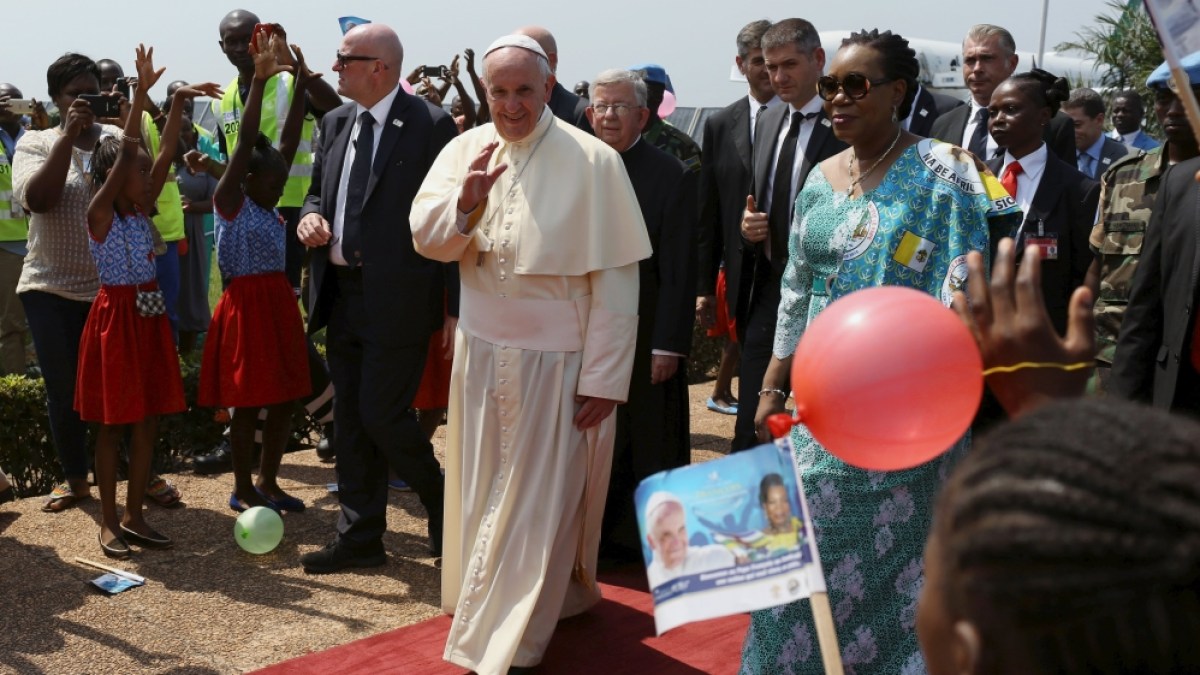
Thousands of miles from the Vatican, the death of Pope Francis is being mourned by millions of Catholics on the African continent.
Francis, who was renowned for his liberal embrace of all groups of people and his vocal support for poor and marginalised communities, was a key figure on a continent sometimes referred to as the “future of the Catholic Church”, owing to the vast population of African Catholics: One in five Catholics is African.
Throughout his papal leadership, Pope Francis solidified recently established Vatican conventions by visiting 10 African countries, reinforcing engagements made by his predecessors. Before the 1960s, popes hardly left the Vatican.
Leaders across Africa, too, are mourning his death. Kenya’s President William Ruto referred to the late pope as someone who “exemplified servant leadership through his humility, his unwavering commitment to inclusivity and justice, and his deep compassion for the poor and the vulnerable”.
Here’s how the late Pope Francis prioritised Africa during his tenure:

Pope Francis’s many trips to Africa
Pope Francis made five trips to Africa throughout his papacy, during which he visited 10 countries.
He opted to visit nations that were in strife and were facing war or low-level conflict. He also focused on those struggling with economic and climatic challenges. The pontiff did not shy away from holding mass in ghettos or kissing the feet of warring leaders in hopes of bringing peace.
Those visits modelled those of Pope John Paul II (1980-2005), who visited more than 25 African countries in his 25 years of service, transforming the way the Vatican engaged with the continent. Pope Benedict XVI (2005-2013) visited three African countries over two visits.
These are the countries Pope Francis visited and when:
2015: East Africa (Uganda, Kenya, Central African Republic – CAR)
The pontiff’s six-day visit to three African countries in November 2015 was replete with colourful welcomes and huge mass events.
In Nairobi, the Kenyan capital, the pope is still remembered and revered for holding mass in Kangemi, a low-income neighbourhood. There, he decried what he called “modern forms of colonialism” and pointed out that the country’s urban poor were excluded and underserved. He also criticised wealthy minorities who, he said, hoard resources meant for all.
In a colourful welcome to Uganda, the pope enjoyed traditional dances from different ethnic groups. He blessed dozens of children thrust into his popemobile, the open-sided car, as he cruised through throngs of people gathered to catch a peep. He also visited a treatment centre for disabled children and spoke to more than 700 disabled people.

Healing a fractured country
Then, in the CAR, the pope did the unprecedented: He ventured into a Muslim neighbourhood amid religious tensions in the country that had lasted for months.
The PK5 neighbourhood in the capital, Bangui, had been off-limits to Christians before then, but as the pope made his way to a mosque there, crowds of Christians followed him in. People who had lost touch cried as they embraced each other.
Pope Francis urged both sides to lay down their arms and called Africa “the continent of hope” in his speeches. The visit would eventually lead to a peace agreement between the warring factions, although true peace would take another five years.
2017-2019 North Africa (Egypt, Morocco)
In April 2017, Pope Francis visited Cairo for two days to support the Coptic minority there, the largest Christian community in the Middle East. Coptic Christians have been subject to marginalisation and deadly attacks for years in Egypt. Francis also reached out to Muslim clerics in the country.
On his March 2019 trip to Morocco at the invitation of King Mohammed VI, the pope also called for religious tolerance and inclusion. He urged Morocco to respect the rights of refugees and immigrants.

2019 Indian Ocean (Mozambique, Madagascar, and Mauritius)
The same year, in September, Pope Francis turned his attention to Southern Africa, particularly countries in the Indian Ocean.
In Mozambique and Madagascar, he called for an end to poverty and better protection of the environment in a region where climate change has brought intensifying storms and destructive cyclones.

2023: Democratic Republic of the Congo (DRC) and South Sudan
Amid ongoing conflict and a humanitarian crisis brought on by armed factions looking to control the country, the pope’s visit to the DRC symbolically called for peace and reconciliation in the troubled central African nation.
The DRC, which has the largest number of Catholics in Africa – an estimated 35 million people – was an important one for the pope, who’d had to postpone the trip because of ill health. Congolese showed up in the thousands to welcome him.
A show of humility for South Sudan
In South Sudan, the pope called for continued peace between rivals President Salva Kiir and his deputy, Vice President Riek Machar. The country, Africa’s youngest, has been rocky since it gained independence from Sudan in 2011. Immediately after, and until 2013, a civil war broke out between factions loyal to the two leaders, leading to the deaths of hundreds of thousands and the displacement of millions of South Sudanese.
Five years before he set foot in South Sudan, the pope had expressed an unusual level of humility: He’d lowered himself with great difficulty to kiss the two leaders’ feet while they were on a spiritual retreat to the Vatican. He called on them to stick to signed peace agreements for the sake of the people.
Since January, the country has once more been on the brink of conflict. In a letter in late March, at a time when the pope was already encountering more serious health problems, he wrote again to the two leaders, calling for peace and dialogue.
Did the pope have a good relationship with African bishops?
Yes, Pope Francis enjoyed cordial relations with different African bishops and their associations. However, he also encountered criticism from some for his stance on same-sex unions.
In December 2023, the pope authorised the blessing of same-sex couples, an unprecedented move in the Church. He ordained that such blessings may be carried out as long as they don’t form part of the Church’s regular rituals, and if they are not carried out at the same time as other civil unions.
African bishop associations pushed back hard at this. Several countries on the continent are strongly against same-sex or other non-conforming gender categories due to religious and cultural beliefs.
One such association was the Symposium of Episcopal Conferences of Africa and Madagascar (SECAM), which, in a statement, rejected the rule and described the union of same-sex or non-heterosexual people as “unacceptable”. The group, under the lead of Cardinal Fridolin Ambongo of the DRC, said “these acts…must not be approved under any circumstances.”
Bishops in Asia also made similar calls for the Vatican to U-turn on the new ruling.
Responding to the criticism, Pope Francis told the Italian newspaper La Stampa that his emphasis was on the blessing of the people involved, not necessarily the union. He said: “We are all sinners: Why then draw up a list of sinners who can enter the Church?”
In the case of criticism from Africa, Pope Francis acknowledged the concerns. “For them, homosexuality is something ‘bad’ from a cultural point of view; they don’t tolerate it,” he said.
-

 Europe2 days ago
Europe2 days agoSimone Biles, Mondo Duplantis win big at 25th Laureus World Sports Awards
-

 Sports2 days ago
Sports2 days agoShannon Sharpe: Pro Football Hall of Famer and podcast star sued for sexual assault and battery
-

 Sports2 days ago
Sports2 days agoSharon Lokedi smashes women’s course record at the Boston Marathon, John Korir wins men’s race
-
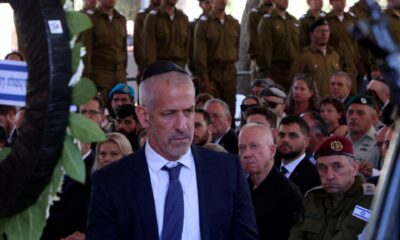
 Middle East2 days ago
Middle East2 days agoIsraeli spy chief accuses Netanyahu of demanding illegal operations | Politics News
-
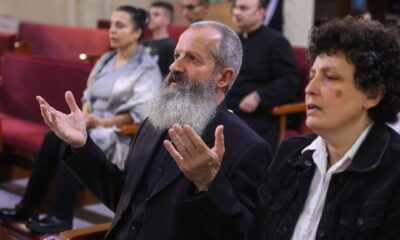
 Conflict Zones2 days ago
Conflict Zones2 days agoGaza’s Christians mourn death of Pope Francis | Israel-Palestine conflict News
-

 Africa2 days ago
Africa2 days agoKenyan runners win both male and female races at Boston Marathon 2025
-

 Sports2 days ago
Sports2 days agoMavs GM Nico Harrison admits he was surprised by Luka Dončić’s level of popularity with fans following shock trade to Lakers
-
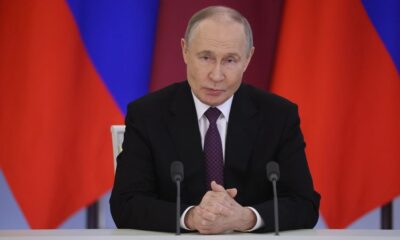
 Europe2 days ago
Europe2 days agoPutin says he’s open to direct talks with Ukraine as US pressure builds




